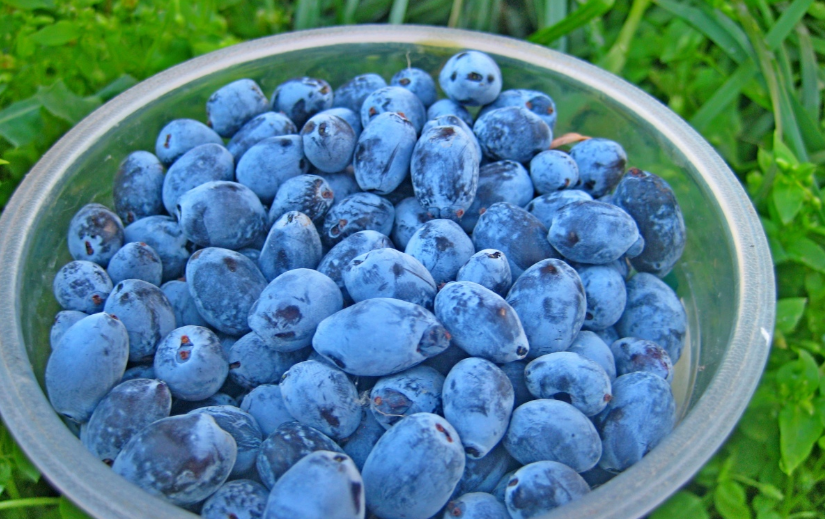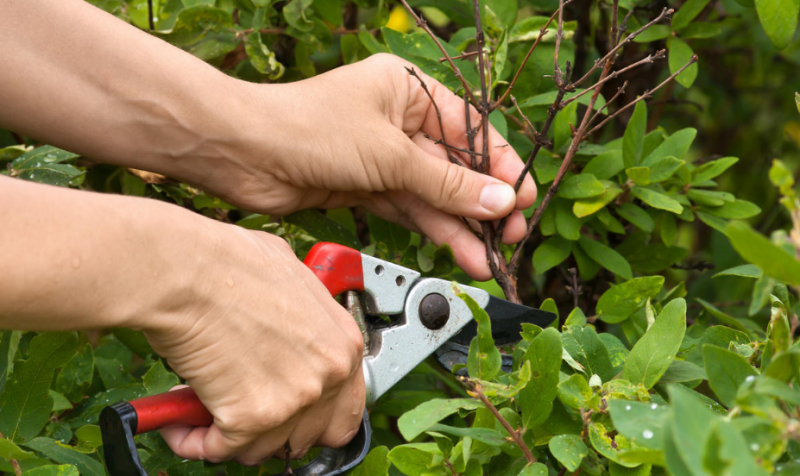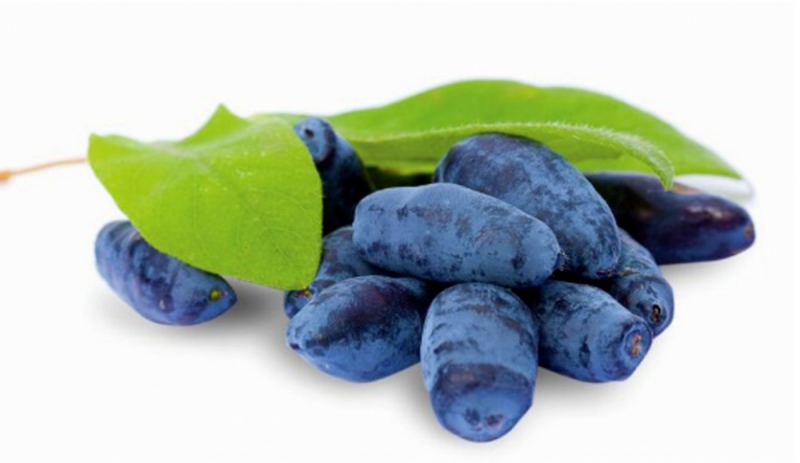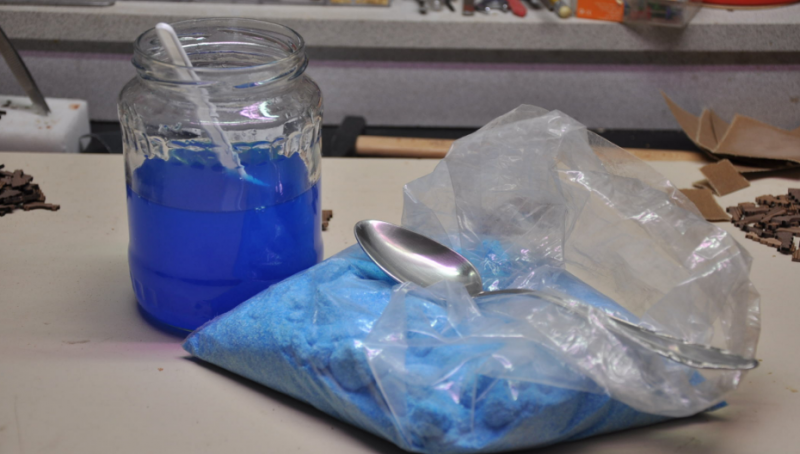Honeysuckle "Blue Bird" is very popular among Russian gardeners. It is notable for its unpretentiousness and good immunity.
Material Content:
Description of honeysuckle varieties "Blue Bird"
- Compact bushes reach a height of almost two meters. They have a spherical crown.
- The branches are strong, growing up. The plant requires garter.
- The variety belongs to early ripening. If the berry is grown in the middle lane, the fruits ripen approximately in the first weeks of summer. The first crop is removed already in the third year.
- In one place, honeysuckle can grow well up to 25-30 years, does not need a transplant.
- 2 - 2.5 kilograms of berries are usually removed from the bush.
Recommended Pollinators
Not far from the honeysuckle of the Blue Bird variety, it is recommended to plant two to three species of pollinators. Although they can be insects, especially bumblebees, without planting adjacent cultural representatives, you can be left completely without a crop.
Recommended grades:
- "Cinderella";
- "Blue Spindle";
- "Moraine".
It is them that are best planted next to the Blue Bird for cross-pollination.

How and when to plant a bush
Honeysuckle should be planted in early spring or at the very beginning of autumn. It is very important to immediately choose the right site for the plant on which it will grow a couple of decades.
The site for this class must be sunny and sheltered from the wind. It is advisable that in the midday heat representatives of the culture should be in the shade, as they do not tolerate heat. Therefore, next to the shrubs, a small tree or large bush is planted.However, you should not allow the honeysuckle to be out of the sunlight all day, since in this case its berries will begin to grow smaller and become sour to taste.
Instructions for planting seedlings:
- Dig through the selected area.
- Dig a hole measuring 50x50x40.
- Prepare a soil mixture for falling asleep. It is necessary to mix humus with excavated earth, add a can of wood ash, phosphorus and potassium.
- Pour the prepared mixture into the hole.
- Plant a seedling, fill it with the remaining nutrient composition.
- Spill the bush. When the earth settles, add soil and mulch. It is advisable to do this with sawdust.
The first three years after planting, representatives of the variety grow very slowly. All this time they need careful care.
Features of outdoor care
Edible honeysuckle is very hygrophilous, especially the Blue Bird variety. Shrubs abundantly irrigate. It is recommended to do this in the evening. On average, 40 liters of water are consumed per plant.
If the bush lacks moisture, its fruits will begin to fade, and the branches will drop leaves. This will negatively affect the yield and development of the specimen.

In order to keep the earth moist for as long as possible, and thereby reduce the number of irrigation required, the ground under the bushes should be mulched. It is also useful in that it prevents the growth of weeds and facilitates care. Moreover, the mulched soil will not heat up so much in the sun in the heat.
Sawdust is best used as mulch for this crop, although shredded straw or broken bark will do.
The variety does not need frequent top dressing, especially if the seedling was well “seasoned” with fertilizers when planting. It is enough to add mineral complexes or organics once in spring and autumn. From the last, honeysuckle loves manure, humus. The culture responds very well to the application of an ash solution. Fertilizers are added only at the same time as watering and loosening the soil.
Loosen the earth around the bushes very carefully, as they have a superficial root system. Loosening deeper than 7 cm is not recommended.
Cutting scheme and technology
The fruiting period of the honeysuckle is very long - the plant can bear fruit, developing in one place up to 30 years. Therefore, pruning is a mandatory procedure. The haircut pattern and time depend on the age of the shrub.
The most favorable moment for pruning is spring and autumn.
- In the spring, the event is held at the very beginning of March. If the bush is already not young, then all shoots that are older than 8 years old are cut off on it. At the same time, regardless of the age of the plant, all broken, frozen and diseased branches are removed. Deformed also cut.
- Every year, in April, the entire shoot is cut.
- In the fall, bushes are trimmed to shape. Do it in September.
- If the shrub is young, about 5 years old, it needs supportive pruning. The maximum height should be about 2 meters. Honeysuckle can grow 1.5 meters wide.
- At the age of 5 years, all replacement branches and root offspring are cut from the bush.
- As necessary, regardless of the time of year, a sanitary haircut is carried out. Its purpose is to free the bush from shrunken branches and diseased shoots.
Most of the honeysuckle berries ripen at the ends of the shoots. As a rule, this is the extreme third of the branch. Therefore, they cannot be shortened unless absolutely necessary.
It is very important to use only a sharp tool for trimming. Secateurs or clippers must be sterile. To sterilize, it is enough for an hour to immerse them in a strong solution of potassium permanganate.
If the cut diameter is more than ½ cm, then the wounds on the branches should be covered with garden varnish or covered with oil paint in a couple of layers. Before processing, it is advisable to rinse the sections with copper sulfate.
If the bush has not been pruned for several years, you cannot remove many branches in one pruning. This is a great stress for the plant, from which it can even die. In this case, several seasons in a row gradually cut the bush, removing 5 old branches.
Berry picking, storage
Kamchatka fruit honeysuckle and other popular varieties are a natural storehouse of vitamins. Therefore, it is important not only to grow berries, but also to collect them on time and save.
You should not rush to pick fruits as soon as they turn blue - you need to give them time to pour in and gain sweetness for about a week. To harvest under the bush, spread out the fabric and shake the berries on it. You can tear them off manually. Peeled fruits are very delicate, quickly let out juice and crumple easily. They are laid in a thin layer in flat containers.
Honeysuckle does not tolerate transportation very well, so it is advisable to use it or process it as quickly as possible.
It is impossible to store fresh berries for a long time even in the refrigerator. It is best to freeze them or make jams, compotes. It turns out very tasty jam. To prepare it, the crop is mixed with other fruits, for example, blueberries or even cherries.
How to care in winter
Blue honeysuckle is frost-resistant enough to survive the winter of the middle lane without loss.
If it is predicted that there will be a little snowy winter and too harsh, peat is poured over the roots with a knoll about 20 cm high to protect them from freezing. The Blue Bird does not need any special care in the winter.
Diseases, pests and methods of dealing with them
Honeysuckle cultivation is practically not difficult, since this culture is quite resistant to pests and diseases. But still, some problems can happen.
Despite the fact that the variety is rarely affected by diseases, preventive measures will not interfere. Before buds open, shrubs are sprayed with fungicides. Copper-containing preparations effectively destroy almost all fungi that a culture can get. The most common spray products are Bordeaux liquid and copper sulfate. You can use modern ones, such as Topaz or Skor.
For the most part, parasitic insects bypass the honeysuckle.
But the prevention of their appearance will never be superfluous:
- Every two weeks throughout the season, shrubs should be dusted with ash or colloidal sulfur.
- Helps scare away parasites and chalk.
- Most pests do not like pungent infusions, such as onion husks or garlic.
- You can also use marigold flowers or tomato tops.
- They do not like insects and peppers, as well as tobacco chips.
Shrubs are treated with infusions according to folk recipes every week.
The Blue Bird variety has a very early ripening period and is suitable even for regions with severe winters. Honeysuckle is very unpretentious and in response to care and a little care, it will thank you with delicious, juicy northern berries.















